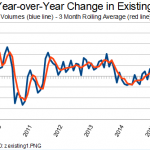The CBOE’s Index Put/Call Ratio spiked yesterday to 1.78
The Index Put/Call Ratio (CPCI) is different from the Equity Put/Call Ratio (CPCE). The Index Put/Call Ratio measures index options as opposed to equity options. For a more detailed explanation, go to Stockcharts.
The stock market made a short-medium term rally the last 2 times the Index Put/Call Ratio spiked to at least 1.77

*I find it particularly interesting that the Index Put/Call ratio didn’t spike on the February 2018 low. Instead, it spiked on the March 2018 low (second retest bottom).
Here’s what happened next to the S&P 500 (historically) when the Index Put/Call ratio spiked to at least 1.78 for the first time in 1 year.


This study has a very small sample size (data only begins from 2003). We’re going to increase the sample size by relaxing the parameters.
Here’s what happened next to the S&P 500 (historically) when the Index Put/Call ratio spiked to at least 1.78 for the first time in 3 months

As you can see, this can lead to some short-term weakness, but the next 3-6 months are more bullish than bearish.
Why is this not a consistently short-term bullish sign for the stock market? Isn’t a spike in the Put/Call ratio “supposed” to be short term bullish for stocks?
The Index Put/Call Ratio is more associated with professionals and institutions who are buying puts as a hedge against their long positions. A spike in the Index Put/Call Ratio means that professionals (who aren’t consistently “smart money”) are buying a lot of Puts in case the market falls in the short term.



















Leave A Comment